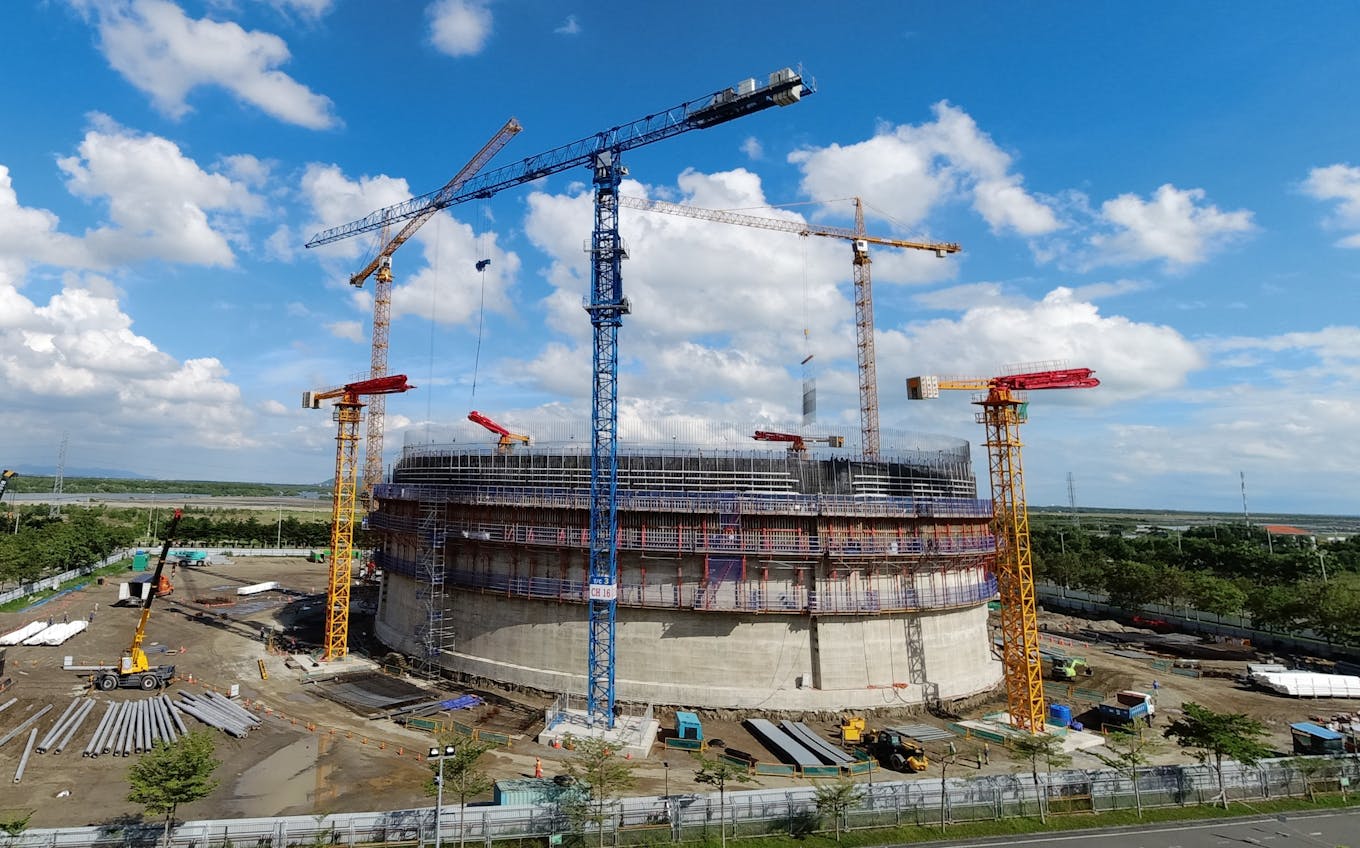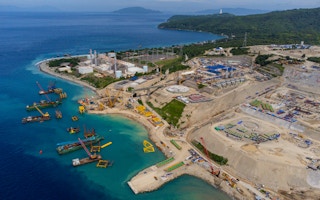Southeast Asia, once predicted to be one of the world’s fastest-growing gas markets, is facing record-high prices and infrastructure constraints.
To continue reading, subscribe to Eco‑Business.
There's something for everyone. We offer a range of subscription plans.
- Access our stories and receive our Insights Weekly newsletter with the free EB Member plan.
- Unlock unlimited access to our content and archive with EB Circle.
- Publish your content with EB Premium.
Such headwinds will slow the development of liquified natural gas (LNG) value chains that would support long-term demand growth in Southeast Asia, said global think tank Institute for Energy Economics and Financial Analysis (IEEFA) in its report published on Friday. LNG growth had previously been forecasted to reach 106 million tonnes per year in 2035, a seven-fold increase from 2019 levels.
The Philippines and Vietnam, which both do not currently import LNG, have not secured any long-term supply contract as of November 2021 and they may be forced to rely solely on volatile spot markets for several years, said IEEFA.
A survey of LNG buyers conducted in November last year suggests that there are no long-term contracts available for shipments until 2026.

The Thi Vai LNG Terminal is a proposed LNG terminal in Bà Rịa-Vũng Tàu Province, Vietnam. Image: CNG VIETNAM
Both countries have also experienced repeated delays in the construction of gas-related projects in their home turf, due to ongoing turmoil in global gas markets as well as protests from communities.
San Miguel Corporation, the largest gas-fired power plant developer in the Philippines, has been held up with eight proposed power projects due to pushback from residents who say emissions from the facility will harm the environmental ecosystem and the livelihoods of locals.
Vietnam has put forward building 23 new gas-fired power plants in its developmental plan but as gas prices have skyrocketed, experts argue that it may no longer be an economically viable option.
Thailand, the region’s top gas consumer, has also curbed its imports due to cost pressures. In November, buyers did not import any volumes from the spot market, which typically accounts for about 30 per cent of the country’s gas supply.
Instead, the government increased purchases of other liquid fuels, delayed decommissioning of coal plants, and obtained more renewable energy from small power producers.

Activists protesting LNG projects along the Verde Island Passage, a marine biodiversity-rich region in Batangas. Image: Maritime Fairtrade
Elsewhere in Asia, LNG demand is expected to fall in South Korea and Japan due to rising nuclear power generation, national energy mix targets for less gas, and expiring long-term supply contracts.
Europe’s push to replace Russian piped gas with LNG caused prices to hit new highs that resulted in purchases slipping to 7 per cent per cent last year in Asia – the first annual drop since 2015.
As unaffordable prices stifled demand in China, Pakistan, Bangladesh, and India last year, utility profits waned, proposed import projects stalled, and countries grappled with a constant threat of fuel shortages and blackouts.
LNG in the Philippines and Vietnam: “a dangerous proposition”
The Philippines is aiming to bring two gas facilities online early this year, while the Hai Linh LNG terminal in Vietnam is expected to be operational in 2024.
But even as Southeast Asian countries start importing LNG, this will be done through the expensive spot markets, said Sam Reynolds, lead author of IEEFA’s report.
“If a country does not have a long-term contract, it can try to buy some from the LNG spot market,” said Reynolds, but prices will then be dependent on supply and demand conditions. “For developing economies that require low-cost energy supplies, this is a dangerous proposition.”
LNG can be purchased through either long-term contracts that ensure supply over an established number of years and at an established pricing formula, or through the spot market, where buyers can purchase a small number of cargoes based on prices determined by the current supply-demand balance.
Spot market prices can be subject to unpredictable international events like the Covid-19 pandemic, where prices fell to US$2 per million British thermal units (MMBtu) and after the Russian invasion of Ukraine, spot prices reached US$70/MMBtu, said Reynolds.
The Philippines has ramped up the development of infrastructure to support the import of LNG to augment the declining reserves of the Malampaya gas field, the country’s only domestic source of energy.
Gas power developers in Vietnam have worked hard to push the message that gas can be a “transition fuel” as its government departs from its traditional coal-centric mindset and rapid penetration of renewable energy in recent years.










